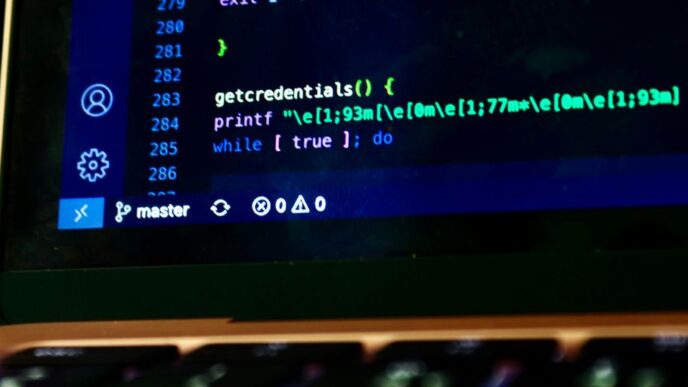In today’s digital age, cybersecurity has become a top priority for individuals and organizations alike. With the increasing sophistication of cyberattacks, traditional security measures no longer suffice. That’s where artificial intelligence (AI) comes in as a game-changer in the world of cybersecurity. From detecting anomalies to mitigating threats, AI is revolutionizing how we secure our data and systems. But what are its strengths and weaknesses? In this blog post, we take a closer look at how AI is transforming cybersecurity and explore its potential impact on the future of online safety.
Introduction: What is AI Security Technology?
As the world increasingly becomes digital, so too does the battlefield for security. Cybersecurity is no longer about protecting physical hardware and software from bad actors. It’s now about protecting data and networks from sophisticated attacks that can come from anywhere in the world.
This is where artificial intelligence (AI) comes in. AI security technology is a game-changer in cybersecurity because it has the potential to outpace attackers by constantly evolving and learning. However, AI is not without its own weaknesses which we will explore in this article.
AI technology can be used for a variety of tasks in cybersecurity, such as:
– Identifying and blocking malware
– Analyzing network traffic for anomalies
– Automating response to incidents
– Generating reports on threats and vulnerabilities
AI’s ability to rapidly process large amounts of data makes it particularly well-suited for these tasks. For example, an AI system can analyze millions of files to identify malware faster than a human could ever hope to do manually. Additionally, AI can also be used to automatically respond to incidents, freeing up human resources to focus on more strategic tasks.
However, AI is not perfect and there are several potential weaknesses that should be considered when deploying AI systems for cybersecurity. First, AI systems require large amounts of data to train on in order to be effective. This data must be high quality and properly labeled in order for the AI system to learn accurately. If there are errors in
Benefits of AI in Cybersecurity
In recent years, artificial intelligence (AI) has become increasingly popular in the cybersecurity field. This is because AI can be used to effectively detect and respond to threats. Additionally, AI can help organizations to automate repetitive tasks, such as patching vulnerabilities or identifying suspicious activity.
However, AI is not without its challenges. One of the biggest challenges is that AI systems require a large amount of data in order to function properly. Additionally, AI systems can be expensive to deploy and maintain. AI systems can introduce new risks, such as the potential for biased decision-making.
Despite these challenges, AI offers many benefits that make it a valuable tool for cybersecurity professionals. Some of the most notable benefits include:
Improved threat detection: AI-enabled systems can quickly and accurately identify malicious activity. This is because AI systems are designed to look for patterns that humans would not be able to see.
Faster response times: Once a threat has been identified, AI-enabled systems can take action immediately. This is important because every second counts when responding to a cyberattack.
Automation of repetitive tasks: As mentioned earlier, AI can help organizations to automate repetitive tasks, such as patching vulnerabilities or identifying suspicious activity. This frees up time for security professionals so they can focus on more strategic tasks.
Reduced false positives: False positives are one of the biggest challenges faced by traditional security solutions.
Challenges of Using AI for Cybersecurity
Despite the many potential benefits of using artificial intelligence (AI) for cybersecurity, there are also a number of challenges that need to be considered. One challenge is that AI systems are often only as good as the data they are trained on. If the data is incomplete or contains bias, then the AI system may make imperfect decisions. Another challenge is that AI systems can be tricked by criminals who know how to exploit its weaknesses. For example, so-called “adversarial examples” can fool machine learning models into making incorrect predictions. There is a risk that AI systems could be used maliciously by attackers to automate attacks or even launch “AI-powered cyber weapons”.
How to Combat the Potential Weaknesses of AI Technologies
When it comes to potential weaknesses of AI technologies, there are a few key areas to focus on. First and foremost, AI is only as good as the data that is feeding it. If an AI system is not trained on high-quality data, it will not be able to produce accurate results. Additionally, AI systems can be biased if they are not properly configured. For example, if an AI system is trained exclusively on male data, it may have difficulty correctly identifying females. AI systems are also susceptible to cyberattacks. If an attacker is able to gain access to an AI system, they could potentially manipulate the results produced by the system.
To combat these potential weaknesses, it is important to take a few steps. First and foremost, make sure that you are using high-quality data when training your AI system. Secondly, configure your AI system properly to avoid bias. And finally, protect your AI system from cyberattacks by implementing security measures such as encryption.
Examples of Companies that are Leveraging AI Security Technology
In recent years, AI has been leveraged by companies across a variety of industries to streamline processes and improve efficiency. The cybersecurity industry is no exception. Here are some examples of companies that are using AI to secure their networks and data:
IBM: IBM’s X-Force Red team uses AI to help identify security vulnerabilities in client systems before attackers can exploit them.
Symantec: Symantec’s DeepSight threat intelligence platform uses machine learning to analyze huge volumes of data to identify new threats and trends.
Palo Alto Networks: Palo Alto Networks’ WildFire malware detection system uses machine learning algorithms to automatically analyze and classify new malware samples.
Cisco: Cisco’s Talos security research team uses machine learning techniques to detect and block malicious emails, websites, and files.
Trend Micro: Trend Micro’s Deep Discovery Inspector uses machine learning to detect evasive attacks that traditional signature-based antivirus solutions miss.
Conclusion: The Future of AI in Cybersecurity
It is clear that AI will continue to be a game-changer in the cybersecurity landscape. With its ability to quickly identify and respond to threats, AI is well-positioned to help organisations keep pace with the constantly evolving cyber threat landscape. However, it is important to remember that AI is not a silver bullet and has its own weaknesses which need to be managed. By understanding both the strengths and weaknesses of AI, organisations can make informed decisions about how best to utilise AI within their cybersecurity strategy.













